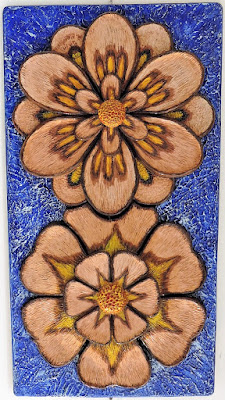 |
| 'The Crucifixion of St Andrew' in San Andrea della Valle, Rome |
At first, the two brothers continued to carry on their fishing trade and family affairs, but later, the Lord called them to stay with Him all the time. He promised to make them fishers of men, and this time, they left their nets for good. It is believed that after Jesus ascended into Heaven, St Andrew went to Greece to preach the gospel, as well as along the Black Sea. He is said to have been put to death on a cross, to which he was tied, not nailed. He lived two days in that state of suffering, still preaching to the people who gathered around their beloved Apostle. Various countries have chosen St Andrew as their patron saint, among them Russia, Ukraine, Romania, and Scotland. In fact, Scotland has incorporated his X-shaped cross in their flag, repeated again in the Union Jack, the British flag.
Relics of the Apostle Andrew are kept at the Basilica of St Andrew in Patras, Greece; the Duomo di Sant'Andrea, Amalfi, Italy; St Mary's Roman Catholic Cathedral, Edinburgh, Scotland; and the Church of St Andrew and St Albert, Warsaw, Poland. There are also numerous smaller reliquaries throughout the world.
The two paintings reproduced here were paintings in the famous church San Andrea della Valle in the heart of Rome. Thankfully they allowed photography in the church, and I was able to take a few photos last May. The church is featured in the first act of the opera Tosca by Giacomo Puccini.




































